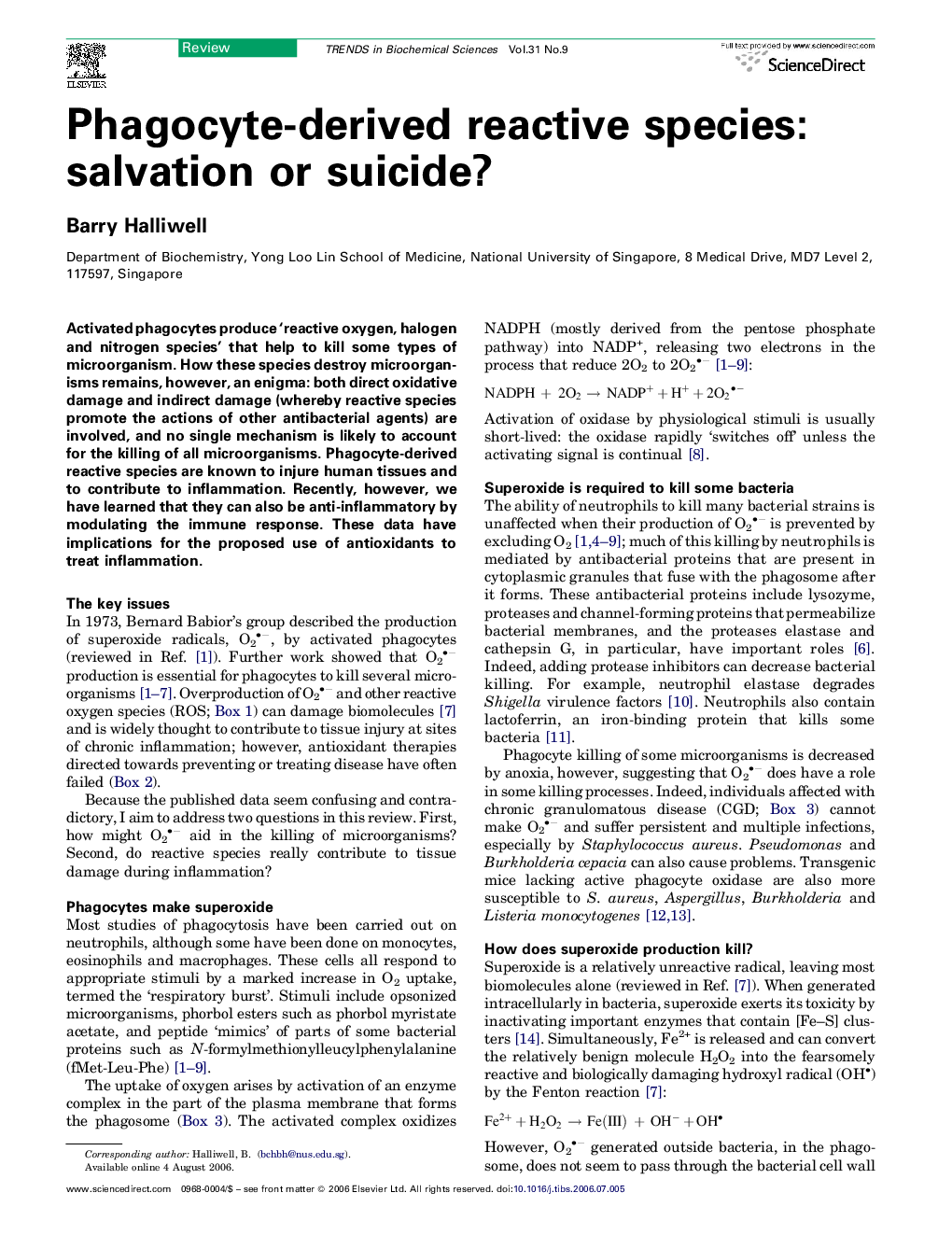| Article ID | Journal | Published Year | Pages | File Type |
|---|---|---|---|---|
| 2031503 | Trends in Biochemical Sciences | 2006 | 7 Pages |
Abstract
Activated phagocytes produce ‘reactive oxygen, halogen and nitrogen species’ that help to kill some types of microorganism. How these species destroy microorganisms remains, however, an enigma: both direct oxidative damage and indirect damage (whereby reactive species promote the actions of other antibacterial agents) are involved, and no single mechanism is likely to account for the killing of all microorganisms. Phagocyte-derived reactive species are known to injure human tissues and to contribute to inflammation. Recently, however, we have learned that they can also be anti-inflammatory by modulating the immune response. These data have implications for the proposed use of antioxidants to treat inflammation.
Related Topics
Life Sciences
Biochemistry, Genetics and Molecular Biology
Biochemistry
Authors
Barry Halliwell,
